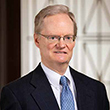New SEC Rules Cause Shift in Money Market Fund Assets

Interest rates on various money market securities have risen noticeably in recent weeks, relative to the yields on short-term U.S. government securities. For example, the difference between the three-month Libor rate (measured in U.S. dollars) and the yield on three-month U.S. Treasury bills recently posted its high for the year.1
Similarly, since early July, rates on financial commercial paper have seen notable increases relative to yields on U.S. government securities. The figure below illustrates the recent increase in private interest rates relative to yields on Treasury bills through plotting three rates since Jan. 1:
- The three-month Libor rate
- An average rate on three-month commercial paper issued by financial institutions
- The market yield on three-month U.S. Treasury bills
Market analysts widely attribute the recent increase in money market yield spreads to new rules issued by the Securities and Exchange Commission for institutional prime money market mutual funds that invest in private money market instruments or securities issued by municipalities.2 The rules, which take effect in October, will require the affected funds to price their shares at floating net asset value, rather than the traditional $1 per share, and permit the funds’ boards of directors to temporarily suspend withdrawals or impose withdrawal fees in the event that a fund’s liquid assets fall below a certain threshold.3
The new rules are intended to avoid sudden large withdrawals from money funds like those seen in 2008 during the financial crisis. However, analysts suggest that the rules will also reduce the supply of short-term loans for financial institutions and other private money market borrowers, and possibly raise their market yields, as prime money market mutual funds attract less investment inflows.
Industry data indicate that, since the new rules were announced in 2014, investors have been moving funds from the prime money market funds into government-only money market funds, which invest solely in U.S. Treasuries and are not subject to the new rules.4 The recent increases in the spreads between private money market rates, such as Libor, and the yields on Treasury bills suggest that the new rules are having a greater impact on markets as their implementation date gets closer.
Of course, the ultimate impact of the new rules on the supply and cost of short-term loans for private borrowers will become clear only when the rules are in place and investors have become accustomed to them.
Notes and References
1 Libor (the London Interbank Offered Rate) is one measure of the cost of unsecured borrowing between banks.
2 Examples of private money market instruments include commercial paper and bank certificates of deposit. Shares in institutional money market funds are held primarily by investment companies, pension plans and businesses. The new rules do not apply to retail money market funds, which are held by individual investors.
3 For more information, see “SEC Adopts Money Market Fund Reform Rules.” Securities and Exchange Commission, July 23, 2014.
4 According to one report, during the 11 months ending on July 31, the assets of institutional money funds that invest in private or municipal securities declined by 35 percent while the assets of money funds that invest solely in U.S. government securities rose by 41 percent. See Stynes, Tess. “Number of U.S. Prime Money-Market Funds to Drop as Rules Change,” The Wall Street Journal, Aug. 24, 2016.
Additional Resources
- On the Economy: Chasing Returns Has a High Cost for Investors
- On the Economy: Mutual Fund Flows and Investor Behavior
- On the Economy: Consumer Debt Is on the Rise
Citation
David C. Wheelock, ldquoNew SEC Rules Cause Shift in Money Market Fund Assets,rdquo St. Louis Fed On the Economy, Sept. 6, 2016.
This blog offers commentary, analysis and data from our economists and experts. Views expressed are not necessarily those of the St. Louis Fed or Federal Reserve System.
Email Us
All other blog-related questions


